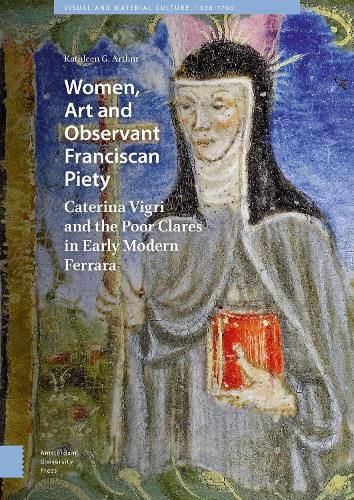Readings Newsletter
Become a Readings Member to make your shopping experience even easier.
Sign in or sign up for free!
You’re not far away from qualifying for FREE standard shipping within Australia
You’ve qualified for FREE standard shipping within Australia
The cart is loading…






Caterina Vigri (later Saint Catherine of Bologna) was a mystic, writer, teacher and nun-artist. Her first home, Corpus Domini, Ferrara, was a house of semi-religious women that became a Poor Clare convent and model of Franciscan Observant piety. Vigri’s intensely spiritual decoration of her breviary, as well as convent altarpieces that formed a visual program of adoration for the Body of Christ, exemplify the Franciscan Observant visual culture. After Vigri’s departure, it was transformed by d'Este women patrons, including Isabella da Aragona, Isabella d'Este and Lucrezia Borgia. While still preserving Observant ideals, it became a more elite noblewomen’s retreat.
Grounded in archival research and extant paintings, drawings, prints and art objects from Corpus Domini, this volume explores the art, visual culture, and social history of an early modern Franciscan women’s community.
$9.00 standard shipping within Australia
FREE standard shipping within Australia for orders over $100.00
Express & International shipping calculated at checkout
Caterina Vigri (later Saint Catherine of Bologna) was a mystic, writer, teacher and nun-artist. Her first home, Corpus Domini, Ferrara, was a house of semi-religious women that became a Poor Clare convent and model of Franciscan Observant piety. Vigri’s intensely spiritual decoration of her breviary, as well as convent altarpieces that formed a visual program of adoration for the Body of Christ, exemplify the Franciscan Observant visual culture. After Vigri’s departure, it was transformed by d'Este women patrons, including Isabella da Aragona, Isabella d'Este and Lucrezia Borgia. While still preserving Observant ideals, it became a more elite noblewomen’s retreat.
Grounded in archival research and extant paintings, drawings, prints and art objects from Corpus Domini, this volume explores the art, visual culture, and social history of an early modern Franciscan women’s community.